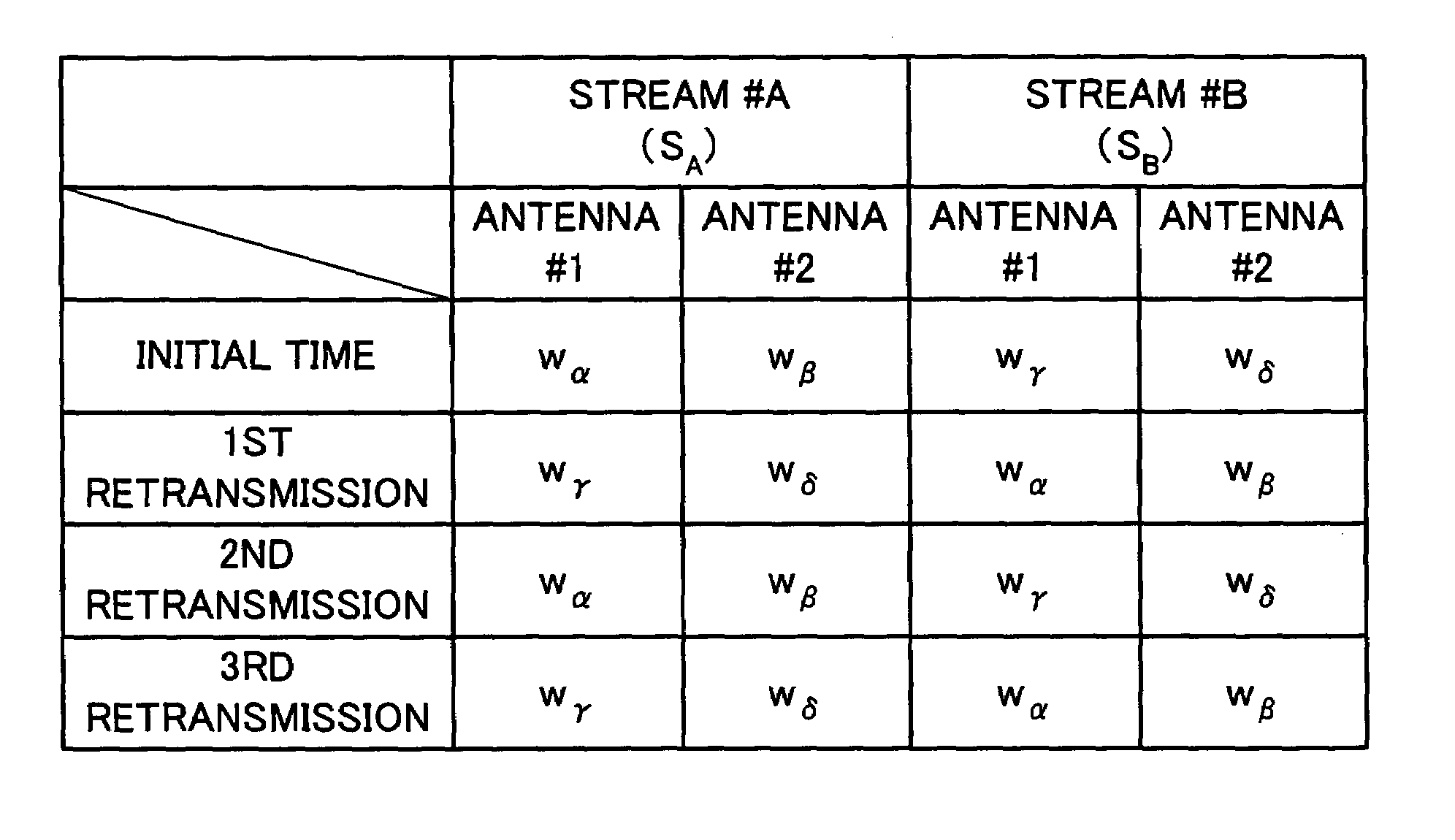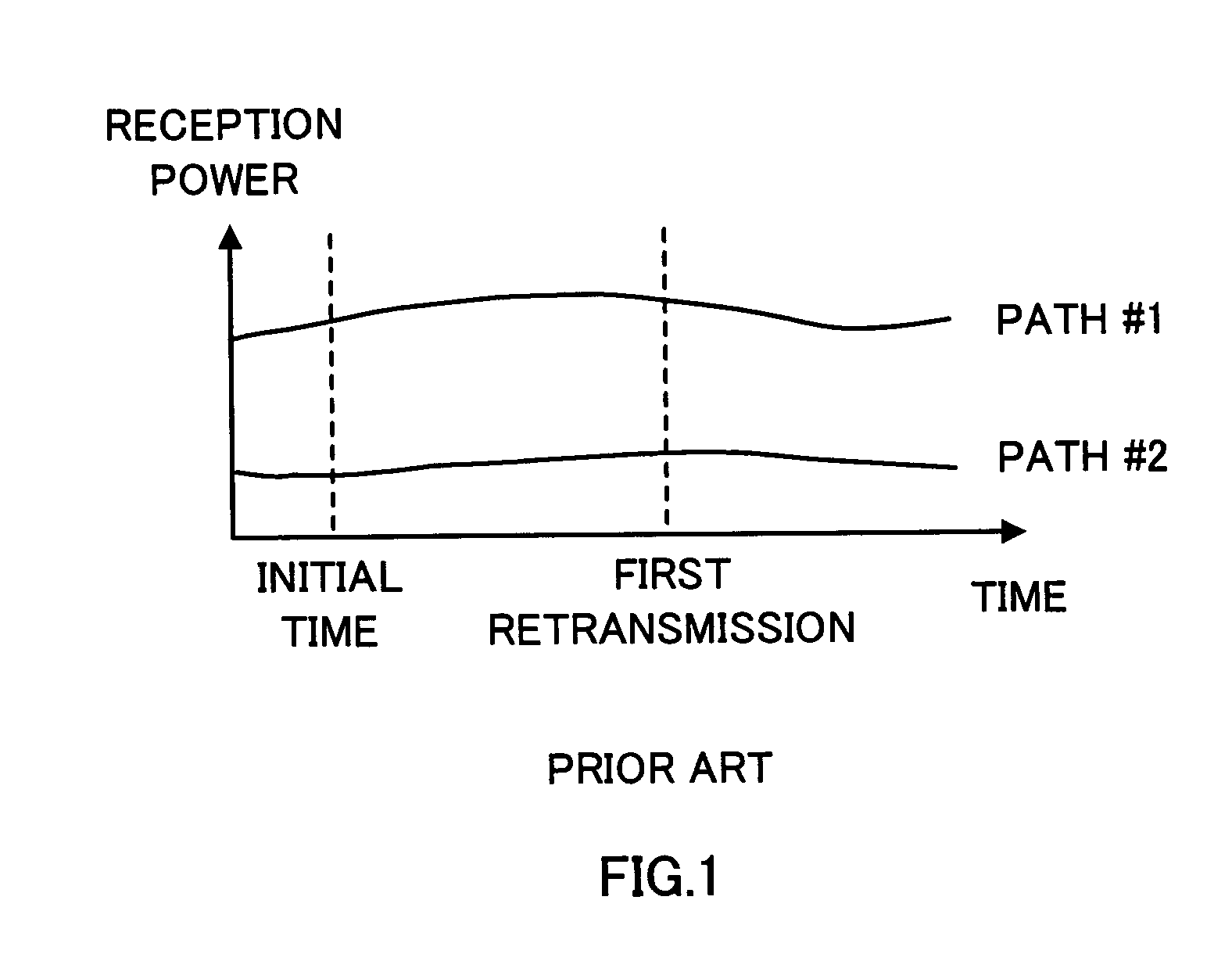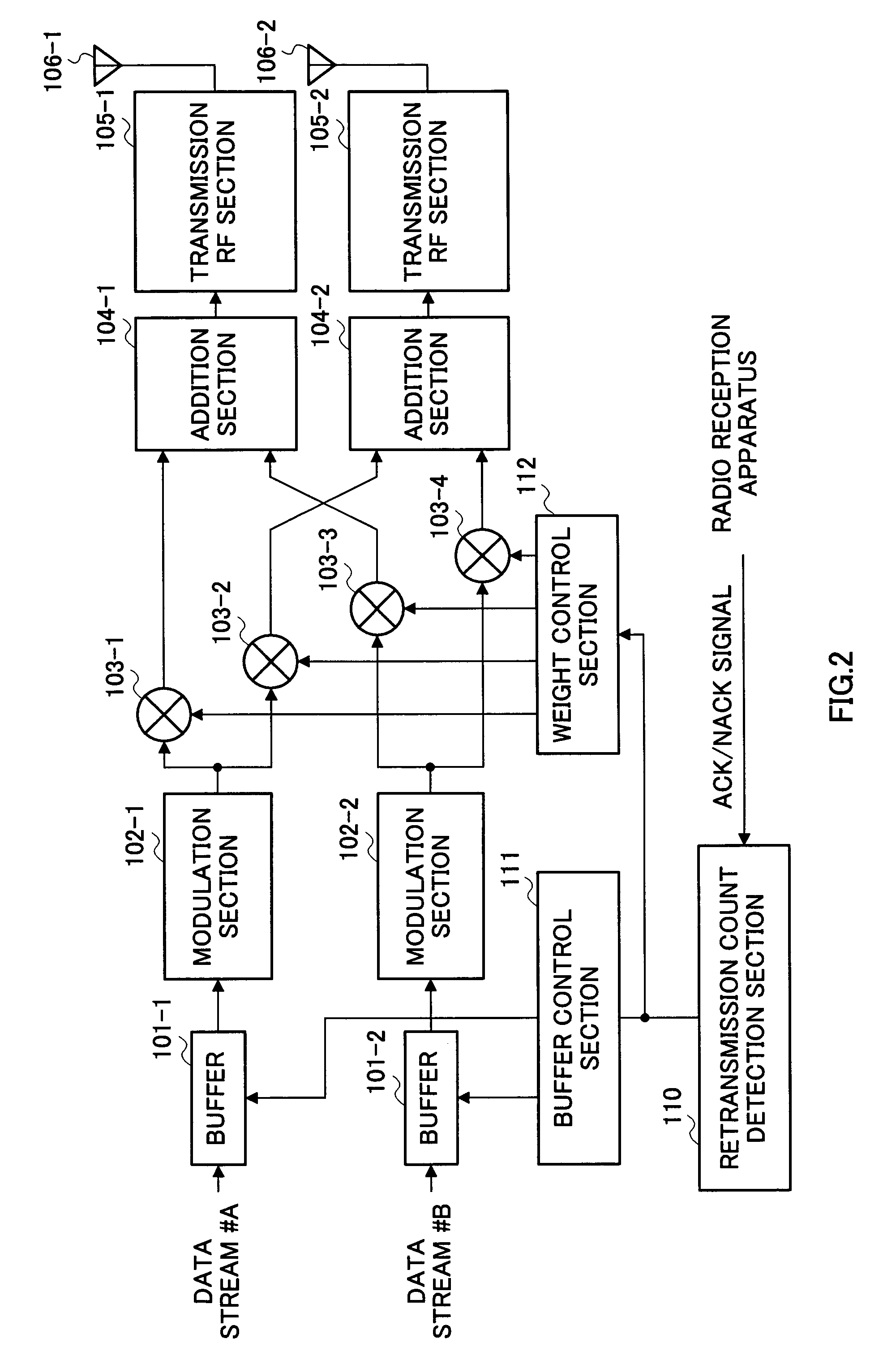Radio transmission apparatus and radio transmission method
a radio transmission and radio transmission technology, applied in the field of radio transmission apparatus and radio transmission method, can solve the problems of small gain obtained with reception power on the receiving side, inability to avoid measuring, and hardly improve the throughput of the radio communication system, so as to achieve the effect of increasing the diversity gain
- Summary
- Abstract
- Description
- Claims
- Application Information
AI Technical Summary
Benefits of technology
Problems solved by technology
Method used
Image
Examples
embodiment 1
[0036]FIG. 2 is a block diagram showing a configuration of a radio transmission apparatus according to Embodiment 1 of the present invention. Here, a case where two streams; data stream #A and data stream #B are transmitted using two antennas will be explained as an example.
[0037]The radio transmission apparatus shown in FIG. 2 is provided with buffers 101, modulation sections 102, multipliers 103, addition sections 104, transmission radio (RF) sections 105, transmission antennas 106, a retransmission count detection section 110, a buffer control section 111 and a weight control section 112.
[0038]In FIG. 2, the data stream #A is input to the buffer 101-1 and the data stream #B is input to the buffer 101-2.
[0039]The buffers 101-1 and 101-2 store the input data streams in preparation for a data retransmission request from a radio reception apparatus. Then, upon reception of an instruction for data transmission from the buffer control section 111, the buffers 101-1 and 101-2 output the...
embodiment 2
[0086]FIG. 9 is a block diagram showing a configuration of a radio transmission apparatus according to Embodiment 2 of the present invention. This radio transmission apparatus has the same basic configuration as that of the radio transmission apparatus shown in FIG. 2 and the same components are assigned the same reference numerals and explanations thereof will be omitted.
[0087]Features of this embodiment include that it is provided with IFFT sections 201, delay sections 202 and a delay control section 203, it carries out a communication based on an OFDM scheme, adds delay times which differ from one transmission data stream to another, transmits the data streams through their respective antennas at different transmission timings at the time of transmission and thereby drastically changes the characteristic of a received signal on the frequency axis. Therefore, it is possible to drastically change the propagation path environment every time retransmission is performed. Furthermore, ...
PUM
 Login to View More
Login to View More Abstract
Description
Claims
Application Information
 Login to View More
Login to View More - R&D
- Intellectual Property
- Life Sciences
- Materials
- Tech Scout
- Unparalleled Data Quality
- Higher Quality Content
- 60% Fewer Hallucinations
Browse by: Latest US Patents, China's latest patents, Technical Efficacy Thesaurus, Application Domain, Technology Topic, Popular Technical Reports.
© 2025 PatSnap. All rights reserved.Legal|Privacy policy|Modern Slavery Act Transparency Statement|Sitemap|About US| Contact US: help@patsnap.com



